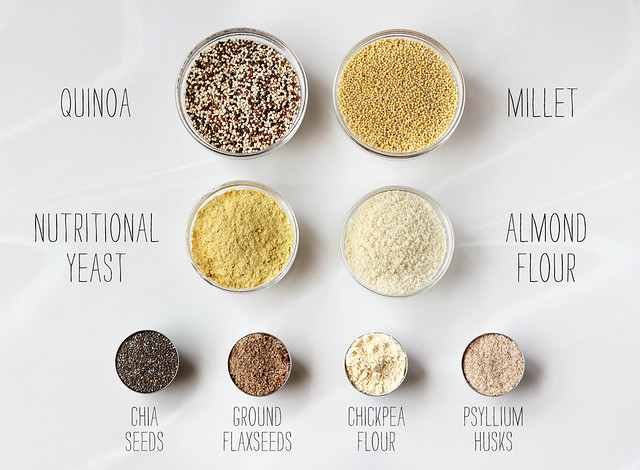-
Restricted Diets: Advice For Dining Out
This next post in my ongoing Restricted Diet series with the Free People blog BLDG25, covers a topic that people write me requesting help with and advice on, all of the time. Besides eating at parties or events where the menu is out of your control (which I talk about here), dining out is one of THE most challenging situations when you have dietary restrictions. As with most situations, the best thing you can do is plan ahead and do your research.
-
Restricted Diets: Focus On What You CAN Eat, Not What You Can’t
This post was originally shared on the Free People blog, BDLG 25.
Restricted Diets: Focus On What You CAN Eat, Not What You Can’t
Many of you know this from following my blog over the past few years, but due to health reasons I was forced to give up gluten in 2005. Since then, I have also willingly removed dairy (with the exception of goat’s milk occasionally) and processed foods from my diet and I maintain a conscientious omnivore diet, with a focus on nutrient-dense whole foods, which means TONS of veggies. I generally avoid refined sugars and processed and refined carbs (though I am not perfect, obvi). One of the number one questions I receive from people when they first meet me and hear of all of my restrictions, is “what else is left” or “so what DO you eat then?”. This question always makes me laugh for the pure fact that I feel like the possibilities are endless and the weeks are not long enough for all of the foods I love to eat to make it into a meal.
I decided a while back instead of focusing on the long list of things I cannot eat, to instead celebrate the never-ending list of those that I CAN. It has been freeing to not only discover new foods that I never even knew existed, but to also get creative with some of the old standbys that pop-up often.
Having so many restrictions, some self-inflicted and some for medical/health purposes, may seem like it leaves very little for me to eat. This couldn’t be further from the truth. Restricting my diet has actually allowed me to find more foods and ingredients than I ever even imagined existed. There was a time when I first went gluten-free that all I could do was think about what I couldn’t eat. Cookies, pizza, cake, pasta, sandwiches…the list goes on and on. I was so sad over what I could no longer eat, that I couldn’t even focus on all of the many things there still were, and many that I didn’t even know about, yet. I began eating anything that I knew was gluten-free and even just closely resembled the food I had been missing so dearly. I gained weight and I felt terrible. It was all over-processed, filled with preservatives, and lab created junk made to make you think you were eating it’s gluten-containing counterpart. It all tasted terrible, was expensive, and I was even more unhappy. That is when I decided to take control of my eating and get adventurous and explore a little.
There had to be more out there and I was ready to find it. I discovered there are so many amazing gluten-free grains that I never even knew existed until I went searching (some of my favorites are pictured at the top of this post). Amaranth, millet, buckwheat, so many various rices – just to name a few. I also decided to start focusing more on fresh and whole fruits and vegetables, legumes, nuts and seeds. After I decided to go dairy-free, processed and packaged food-free and eating very little meat, I really had to get creative with what I was eating. I have discovered so many fun things – for example:
– Using nutritional yeast in a recipe can give a cheesy flavor to vegan pasta sauces.
– Use ground flax seeds with hot water to replace eggs in many recipes to make them vegan.
– Psyllium husks give a great texture to gluten-free breads and baked goods that I had never found before.
– Make absolutely delicious baked goods totally grain-free by using almond flour – you would never know there isn’t a single grain in there.
– Make a delicious flatbread with literally just chickpea flour, water and oil.
The list of my discoveries just goes on and on! Instead of looking around and seeing all of the things that everyone else can have and I cannot, I now think about all of the creative ways to play with all of the amazing ingredients I have discovered. One of my favorite things to do is to go to the farmers market each week and with each trip I challenge myself to find and buy a food I have never heard of before or have never cooked with and get creative with it. It is so exciting and it keeps me on my toes.
This same philosophy can work for you, whether you are gluten-free, vegan, dairy-free, paleo, corn-free, sugar-free, nut-free, soy-free, grain-free, etc. Get out explore the rows of food at your farmers market and your local grocery store. Buy something you normally wouldn’t (as long as it is safe for you) and play. You might actually surprise yourself and learn to love a food you never even knew existed. Focus on the long list of amazing fresh and healthy foods that you can eat, instead of dwelling on the list of things you cannot. It is so freeing and inspiring!










